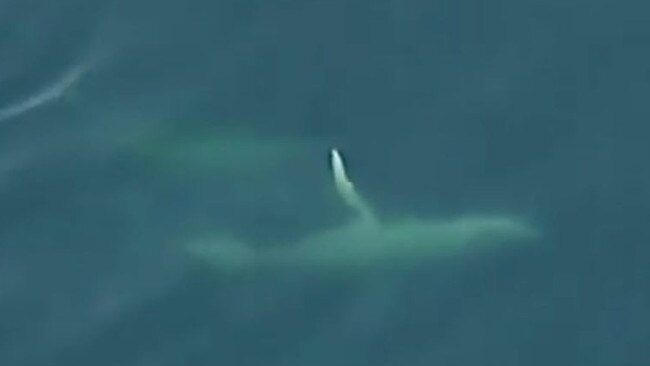Pod of humpback whales seen frolicking off Frankston
INCREDIBLE footage has captured a group of whales frolicking in the bay off Frankston this morning.
VIC News
Don't miss out on the headlines from VIC News. Followed categories will be added to My News.
INCREDIBLE footage has captured whales frolicking in the bay off Frankston this morning.
The pod of five humpback whales are on their annual migration, which has in recent years coincided with Queen’s Birthday long weekend.
The whales, spotted near Olivers Hill lookout — which offers scenic views across Port Phillip Bay — usually spend up to two days the bay before continuing on.

WHALE CALF WOWS CROWDS OFF VIC COAST
KILLER WHALES SPOTTED NEAR PHILLIP ISLAND
COPS SPOT HUMBACK NEAR MORNINGTON
There have also been sightings of southern right whales outside the bay today, the Department of Environment, Land, Water and Planning said.
The humpback whale has one of the longest migrations of any mammal in the world, travelling over 12,000 km annually from Antarctic waters to breeding grounds in warmer waters of northeastern and northwestern Australia.

The calving and mating season takes place in winter between June and October.
There were a record number of reported whale sightings in 2016 in Melbourne’s Port Phillip and Western Port bays.
In 2014, a rare whale was spotted swimming close to the shore in Port Phillip Bay off Bonbeach, Chelsea and Aspendale.
The subadult southern right whale had distinct white markings on its head.
The calving and mating season takes place in winter between June and October.
Humpback whale facts:
— Humpback whales have a life expectancy of about 50 years
— They are very acrobatic, often leaping or ‘breaching’ high out of the water before crashing back down
— Sometimes they twirl around in the air while breaching. Nobody’s sure why they do this, but it could be for communication, play or to loosen skin parasites
— It has one of the longest migrations of any mammal in the world, travelling over 12,000 km annually
— Humpback whales are named after the humped appearance of their back, which is displayed when they dive
— Humpbacks have long pectoral fins, which are white underneath and have a jagged edge on one side.
— Their body colour ranges from grey to black on the back, with varying patterns of white on the underside of their body, tail fluke and flippers
— Humpback whales are found in oceans worldwide, from polar to tropical waters. They are regularly found in Arctic, Atlantic and Pacific oceans and at times in Antarctic waters
— Humpbacks don’t have teeth; instead they eat by sifting seawater through their mouths to catch shrimp-like animals. The seawater is filtered through sieves called baleen plates.
— Humpbacks also feed by slapping the water with their fins to stun fish, allowing the whale to swallow them with ease


